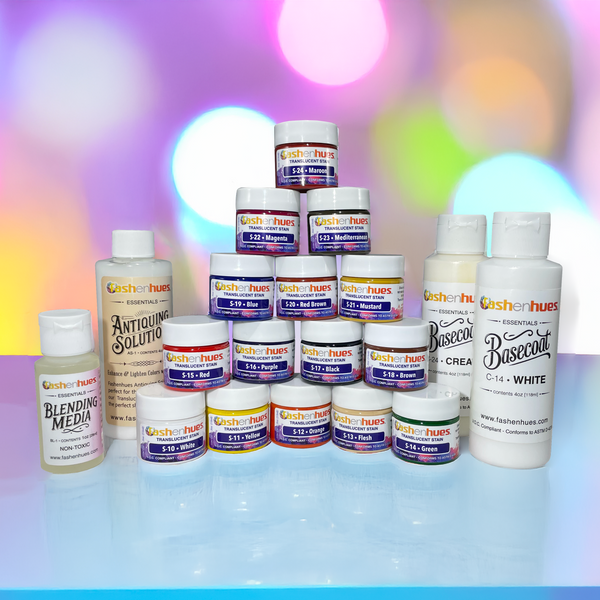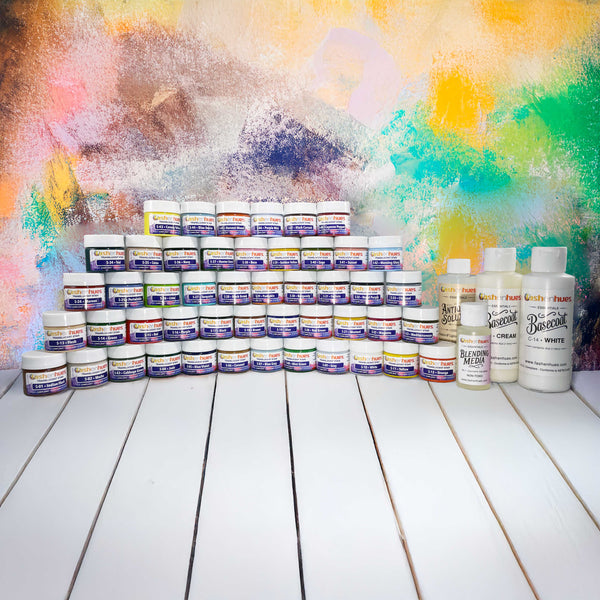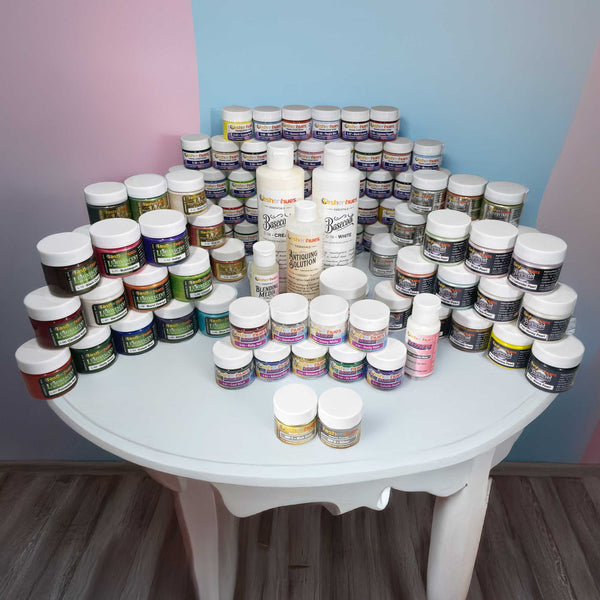With the addition of new colors and color lines, it's important to remember that Blending Media can ONLY be used with the "S" series (Translucents). Use with any other line will render the product useless.
When mixed with an antiquing color, wiping is much easier and easier. However, use caution when mixing with colors. Too much and the color won't dry.
While Blending Media can be mixed with all the translucent colors, it is particularly vibrant when used with pastel stains. When used this way, it makes them more transparent.
When using Blending Media with translucent colors, drop about ¼ tsp on your pallet.
DO NOT put Blending Media into a bottle of color except when used in an attempt to recover a bottle of dried out product. (See instructions below.)
Apply color of your choice to another area of the palette. Tip brush in Blending Media, a very small amount, then dip your brush into the color. Swirl your brush on the palette to distribute. Apply to piece and wipe back as usual. You will find color is easier to apply when used in this manner when compared to working without the media.
When painting a smooth area of bisque, for instance a sky scene, the color wipes back unbelievably smooth. This result is especially effective when added to a second color over an under laid base colored sky. A good base color for a sky would be S-7, Blue Gray, or for a lighter base, S-42, Morning Glory. For a darker sky, you might use S-44, Denim. When adding a second color such as S-22 Magenta, or S-21 Mustard, try using a piece of t-shirt like material to apply the second color. It blends in nicely to the base sky color. Smooth surfaces and skin tones are sometimes difficult to achieve. Using Blending Media will make them much easier. To develop skin tones, try using Blending Media with S-13, flesh. Load your brush as previously explained. Remove any excess on paper and apply.
If the color doesn't flow onto your project, too much Blending Media could be in your brush.
To resolve the problem, wipe back some of the color using Antiquing Solution on t-shirt like material.
Then clean your brush by taking the cloth you have just used with the Antiquing Solution and wipe bristles, pulling from the base of the brush, the feral area, to the tip of the brush.
You can then restart the process, this time using less Blending Media.
When Blending Media is used as directed, your translucent color will create a finish that is much smoother than without. Brush strokes are virtually nonexistent.
Enjoy your work and make it easier. With the use of Blending
Media, you will find an exciting new methodology for your translucent stain work.
RECOVERING DRIED COLOR STILL IN ORIGINAL JAR.
It is sometimes possible to recover dried color in its original jar.
DO NOT try to use a new or different container.
If there is no liquid consistency still remaining, recovery is almost impossible.
Due to the precise dissolution of pigments when a color is initially produced, attempts to duplicate this process are extremely difficult.
To attempt to recover a color that has dried or gotten thick in its bottle, put ONE SMALL DROP of blending media and four drops of water into the jar and stir. Break up any dried particles.
If this consistency is too thin, the color cannot be recovered.
If your color is still thick, add water, one drop at a time. Add no more than 3 drops. DO NOT ADD any more blending media or your color won't dry.
If you have not achieved a consistency to work with, this doesn't produce a workable color.
You MAY be able to small amounts of color by working it out on your palette.
“Mash” it to break up ALL crusty pieces. Add a drop or two of water and tip of your brush into the blending media as you normally would.
If none of these methods work, you will need to purchase a new jar.






